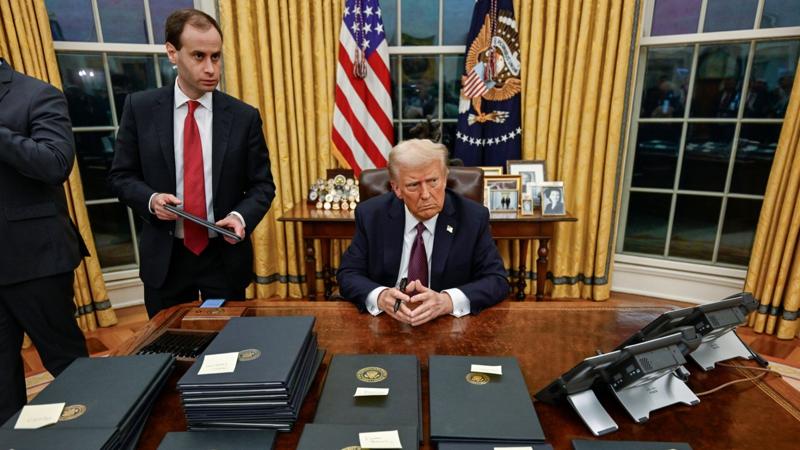With U.S. House and Senate Republicans heading on a collision course over how to implement President Donald Trump’s campaign promises, the commander in chief has finally stepped in to announce his choice between the two.
The two chambers are divided mainly over how and when to extend Trump’s expensive 2017 Tax Cuts and Jobs Act (TCJA), while also ensuring funding for the president’s border, defense, and energy policies.
The chambers must advance identical budget resolutions before they can move forward in the reconciliation process. But two very different budget resolutions are simultaneously moving forward: a $4.5 trillion, all-in-one House bill that extends the TCJA cuts, and a fully offset $342 billion Senate bill that leaves the tax cuts for a later date.
Following the Senate’s Tuesday night vote to proceed with debate on its budget resolution, Trump endorsed the House’s plan Wednesday morning.
“[T]he House Resolution implements my FULL America First Agenda, EVERYTHING, not just parts of it! We need both Chambers to pass the House Budget to ‘kickstart’ the Reconciliation process, and move all of our priorities to the concept of, ‘ONE BIG BEAUTIFUL BILL,’” Trump posted on Truth Social. “It will, without question, MAKE AMERICA GREAT AGAIN!”
Besides extending the tax cuts for at least 10 years, the House budget resolution authorizes a $300 billion increase in defense and border security spending, to be split among the Armed Services, Homeland Security, and Judiciary committees.
To partially accommodate its $4.5 trillion price tag, the proposal also instructs the Ways and Means Committee to raise the debt ceiling by $4 trillion and instructs other committees to find at least $1.5 trillion in spending cuts over the next ten years.
As House Republicans crafted and advanced that resolution last week, Senate Budget Committee Chair Lindsey Graham, R-S.C., became impatient and introduced the “skinny” budget resolution that only funds defense, border, and energy policy.
Despite the president now expressing full support of the House’s bill, senators are moving ahead with their own version. Senate Majority Leader John Thune, R-S.D., told reporters Wednesday afternoon that he has no intention of backtracking but is fully open to working with the other chamber.
“If the House can produce one big, beautiful bill, we’re prepared to work with them to get that across the finish line,” Thune said.
He added that the differences are merely “tactical,” and that the strategic objective to fund the president’s tax, energy, border, and military policies “is still the same.”
Democrats, for their part, have opposed both budget resolution options, but particularly the House version since it curtails entitlement spending to help fund the tax cuts. They are particularly worried about likely changes to Medicaid and SNAP programs, such as per capita caps or work requirements.
“Last night, Trump said he wouldn’t cut Medicaid. He just endorsed the House Republican budget that makes at least $880 BILLION in cuts to Medicaid and the Affordable Care Act,” Rep. Brendan Boyle, D-Pa., said on X. “They’ll say or do anything to get more giveaways for their billionaire donors.”
If the Trump tax cuts expire, the average taxpayer will see a 22% tax hike as well as their guaranteed deduction slashed in half, according to data from the House Ways and Means Committee.
But the House resolution would also add at least $2 trillion to the federal deficit, even if America experiences strong economic growth. The national debt, currently more than $36 trillion, grew by $2.5 trillion in fiscal year 2024 alone and is projected to reach $40.9 trillion by 2027.







